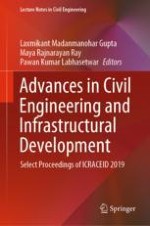2021 | OriginalPaper | Buchkapitel
Comparative Study of Prediction of 28 Days Strength Using Fuzzy Logic and Model Tree
verfasst von : Vardhan Nagarkar, P. S. Kulkarni, S. N. Londhe
Erschienen in: Advances in Civil Engineering and Infrastructural Development
Verlag: Springer Singapore
Aktivieren Sie unsere intelligente Suche, um passende Fachinhalte oder Patente zu finden.
Wählen Sie Textabschnitte aus um mit Künstlicher Intelligenz passenden Patente zu finden. powered by
Markieren Sie Textabschnitte, um KI-gestützt weitere passende Inhalte zu finden. powered by
